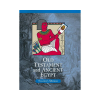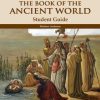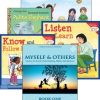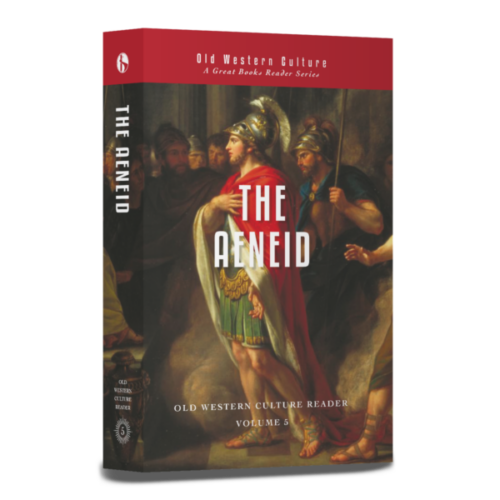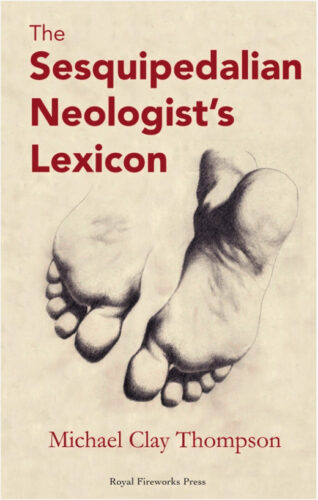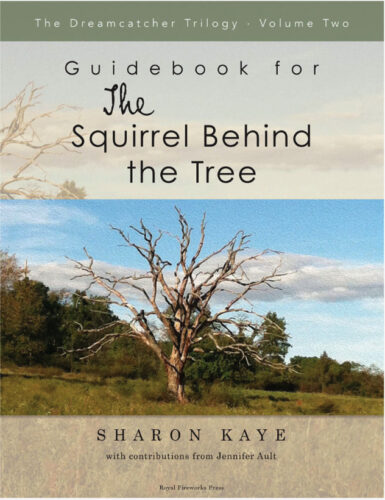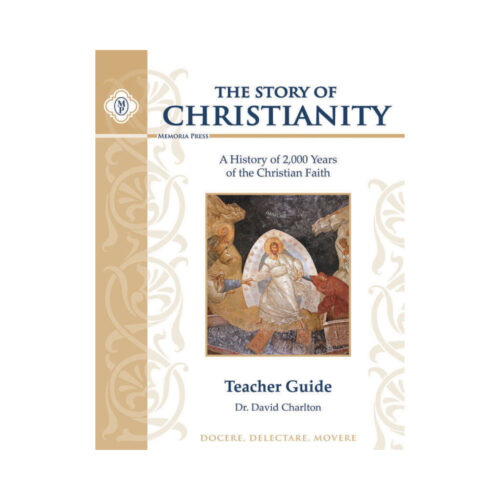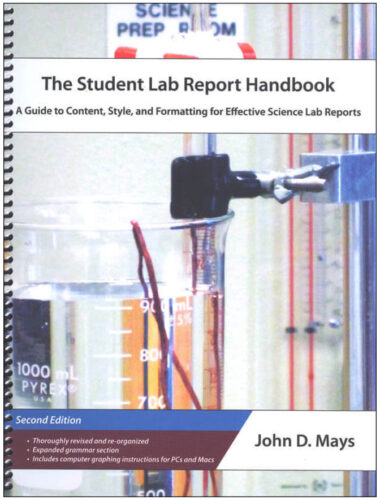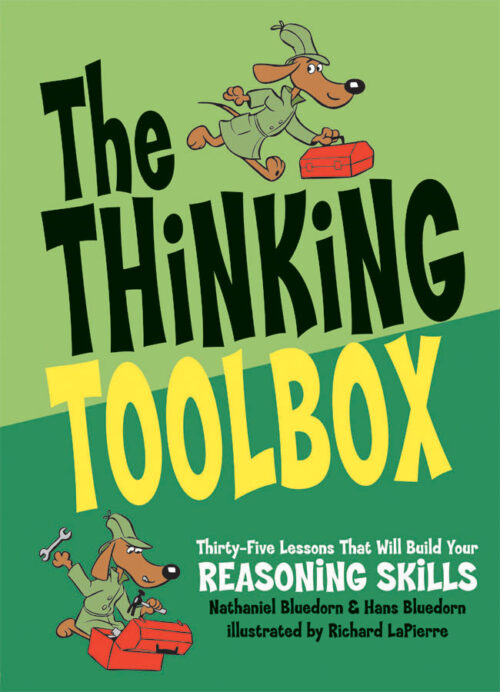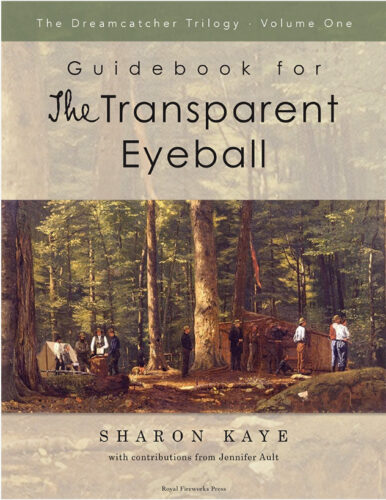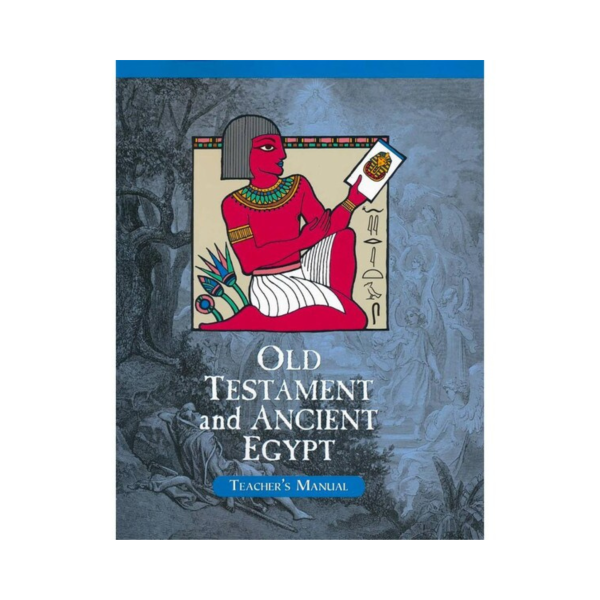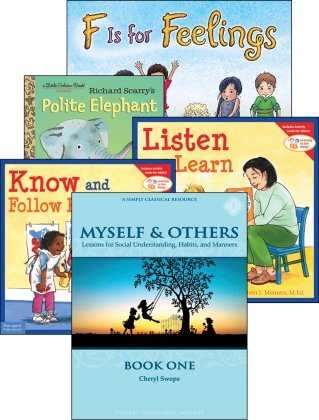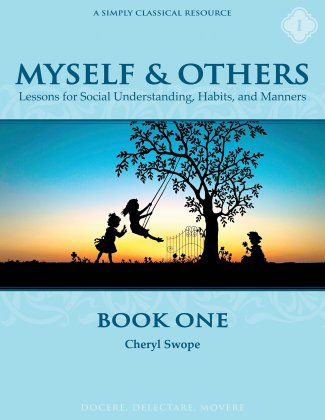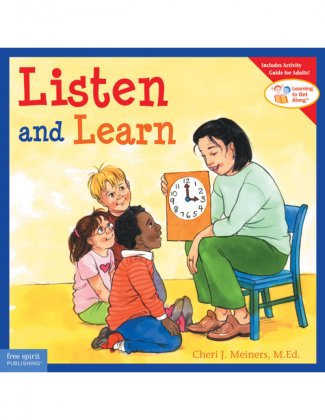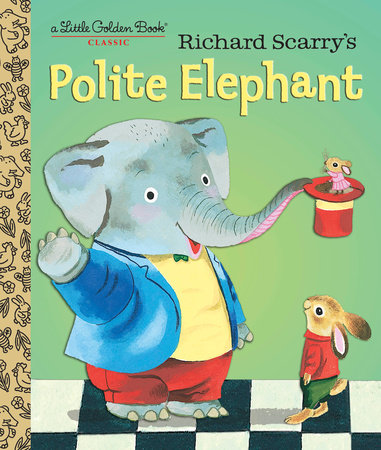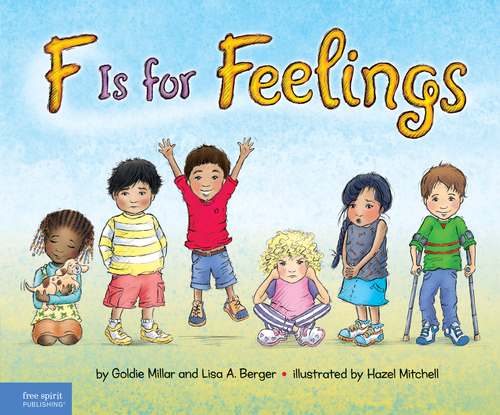-
1.0 Old Testament and Ancient Egypt - Teacher's Manual $53.95 QTY: 1Quantity
-
The Book of the Ancient World - Student Guide $27.95 QTY: 1Quantity
-
Myself and Others Book One: Core Set
- Includes:
Myself and Others - Book One × 1
Know and Follow Rules × 1
Listen and Learn × 1
Polite Elephant × 1
F is for Feelings × 1
Quantity -
The Story of Christianity - Teacher Guide $27.95 QTY: 1Quantity
“The Story of Christianity – Teacher Guide” has been added to your cart. View cart
-
The Teacher Guide includes the following: answers to questions contained in the Student Guide, quizzes, tests, exams, and the answer key2 GradesSku: 9781615383528
The Republic and The Laws – Teacher Guide
By: Michelle Luoma$27.95 -
SaleMarcus Tullius Cicero, a Roman statesman from the first century B.C., was convinced that the upright moral life was the happier life. The Republic became the blueprint of the U.S. government almost 2,000 years after it was written. In The Laws, Cicero defends his understanding of the upright moral life and becomes the foundation for the West’s philosophical discussion on the natural law. Studying such perennial works is a boon to everyone.
The Republic and The Laws Set
By:$80.40Original price was: $80.40.$68.35Current price is: $68.35. -
EARLY CHRISTIANITY reader is a selection of patristic works from the early church. It was designed to complement The Romans: Early Christianity, a unit in the Old Western Culture curriculum, and includes all the assigned readings in one volume! As with all units of Old Western Culture, students may purchase or use their own texts, or use the free PDF edition of this text. This print edition reader was made as a convenience to students who prefer a physical edition of the works, but do not own and do not wish to purchase all the various texts.Sku: 9780989702898
The Romans: Early Christianity Reader
By:$39.00 -
NICENE CHRISTIANITY Reader is a selection of patristic works from the early church. It is designed to complement The Romans: Nicene Christianity, a unit in the Old Western Culture curriculum, and includes all the assigned readings in one volume! As with all units of Old Western Culture, students may purchase or use their own texts, or use the free PDF edition of this text. This print edition reader was made as a convenience to students who prefer a physical edition of the works, but do not own and do not wish to purchase all the various texts.Sku: 9781944482015
The Romans: Nicene Christianity Reader
By:$39.00 -
The Aeneid Reader covers all the readings required for The Aeneid unit of Old Western Culture, including all of Vergil’s Aeneid, as well as portions of Ovid’s Metamorphoses and other minor Roman poets.Sku: 9781944482459
The Romans: The Aeneid Reader
By:$39.00 -
THE HISTORIANS READER is a selection from the most famous works written by the historians of the ancient Roman Empire. It is designed to complement Romans: The Historians, a unit in the Old Western Culture curriculum, and includes all the assigned readings in one volume! As with all units of Old Western Culture, students may purchase or use their own texts, or use the free PDF edition of this text. This print edition reader was made as a convenience to students who prefer a physical edition of the works, but do not own and do not wish to purchase all the various texts.Sku: 9781944482053
The Romans: The Historians Reader
By:$39.00 -
The Sesquipedalian Neologist’s Lexicon is a small dictionary of delightful words created by Michael and his students by piecing Latin and Greek stems together. Once students see how stems combine to make words, they might wish to create some of their own. It becomes an interesting language exercise!8 GradesSku: 9780880921749
The Sesquipedalian Neologist’s Lexicon
By: Michael Clay Thompson$6.50 -
From CiRCE Institute:A reading guide can do one of two things:
- It can tell you what to think
- Or it can teach you how to read
This guide strives to do the latter. We aren't trying to convince you to think like us; we want to provide avenues of access to the story you are reading.Our approach is driven by the belief that stories are natural to human beings and that, therefore, the best approach to story is to approach it like humans naturally approach stories. Stories are different from paintings and rocks and symphonies because they have characters who make decisions and the drama of a story revolves around those decisions.Technical literary elements are wonderful things to learn because they can help a reader think about and interact with ideas a story-teller is developing. But they have to revolve around the core event of the story, which always remains the decisions and actions of the main characters.A theme or motif or literary device can help the reader understand what the author is getting at. But considered in isolation, themes, motifs, and literary devices lose their meaning and purpose, and become mere fodder for academic exercise.This reading guide is not interested in academic exercises. It is interested in stories and the people who read them. If you read the story the way this reading guide shows you, you will become a better reader. You will find the stories more interesting too. And you’ll have plenty to contribute to a discussion about this story or any other story you might read. In fact, you’ll see how every story is part of a vast tapestry woven by every author who has ever told a story, some with greater influence than others, but all adding a valuable thread to the tapestry.What then is the story?Think of any story you have ever read or heard, no matter how short. You can include TV shows and movies. You probably notice that stories happen somewhere and at some time. You probably also notice that there are always characters in a story, and that at least one of the characters has some really big problem to deal with (he’s in love and the girl doesn’t notice him, the mountain is shaking and he’s about to be swallowed in an avalanche, he’s lost his wallet or his horse or his mind and needs it for something right now, etc.)The urgency of a story comes from this need to act, but before the character can act he needs to make a decision. What are his options? What do you think he should do?Take Achilleus, for instance. When you read The Iliad, you’ll have the privilege of reading about one of the most interesting characters in all the long history of stories. But it all starts, as Homer tells us in line one, with his rage. He’s so angry he could…Well, we don’t want to spoil the story, but he could do some pretty awful things. But should he?In book one, you’ll see how his leader, Agamemnon, the king of kings, insults him in a way that you and I can hardly imagine. In fact, when you first read it, you might think Achilleus is over-reacting. But that’s the whole point. That’s what we’re supposed to wonder. Is he over-reacting? The whole Iliad is about his anger and the pain that it caused (read the first 10 lines and you’ll see that Homer doesn’t wait to tell us about that anger and that pain). What do you think? What would you have done?All 24 “books” ( think chapters) of the Iliad involve characters who have a key decision to make. If you want to read like you’ve never read before and enjoy a story more than you thought you were allowed to, plunge in to those decisions. Find characters that you like or dislike and argue with them.But keep your mind open. As you read the Iliad using this guide, you will form your own opinions, and then you will test them. With each book you’ll be moving closer and closer to the heart of a very angry man, and you’ll also join a number of other characters who also have painfully difficult decisions to make -- the kind of decisions you often have to make yourself, though hopefully not often with so much at stake.In the end, that is one of the best reasons to read Homer. Read him closely and he’ll give you a great gift: the ability to make better decisions.Should you accept our invitation and read the Iliad? If you do, we who love Homer are happy to offer you clues to the pleasure of the story. Thank you for letting us play a small part in increasing your joy on the journey!Sku: 9780986325731The Space Between – A Guide to Homer’s Iliad
By: Phillips, Brian$29.50 -
The Squirrel Behind the Tree guidebook, for both instructors and the students themselves, explores the philosophical bases behind the concepts introduced in the novel and includes excerpts of works by Huxley, Adler, James, Peirce, Dewey, and others who were central to the movement known as Pragmatism and who influenced Dewey’s views of religion, democracy, and education. It also provides in-depth discussion questions about both the readings and the novel.3 GradesSku: 9780898246919
The Squirrel Behind the Tree – Guidebook
By: Sharon Kaye, Ph.D., Jennifer Ault$26.50 -
This novel traces a fictionalized version of American philosopher John Dewey’s intellectual development. In it, Dewey meets several great philosophers at a philosophers’ camp, where he explores the concepts of Pragmatism, democracy, and issues of social justice, including the rights of children. Dewey revolutionized the American educational system, and this story examines the forces that led him to that achievement, while engaging readers in a compelling tale of curiosity and discovery.3 GradesSku: 9780898246902
The Squirrel Behind the Tree – Student Book
By: Sharon Kaye, Ph.D.$26.50 -
The Teacher Guide includes the following: answers to questions contained within the Student Guide, tests and the final exam, and the answer key.Sku: 9781615384723
The Story of Christianity – Teacher Guide
By: Dr. David P. Charlton$27.95 -
Now your child can enjoy The Strange Case of Dr. Jekyll and Mr. Hyde by Robert Louis Stevenson as a Michael Clay Thompson language-illustrated classic. The novel is reproduced in its entirety and includes Michael's "language illustrations"—close-ups of poetic techniques, four-level analyses of interesting grammar, and comments about writing strategies. Challenging vocabulary is defined at the bottom of each page. The novel is a disturbing account of murder and personality, good and evil, and dangerous experiments in a foggy London of the nineteenth century. Michael describes it as “one of literary history’s great stories of intuitive inspiration.... The reasons that Dr. Jekyll and Mr. Hyde are famous all lie within the book itself. It is an extraordinary book by one of literature’s most talented writers." In addition, Stevenson’s “On Some Technical Elements of Style in Literature” is included to demonstrate that the author knew what he was about in the craft of writing. Michael believes that Stevenson is under-appreciated as a serious writer and says that this essay is “one of the best statements in literary history of what a supremely talented writer was thinking."
Dr. Jekyll and Mr. Hyde (Stevenson) Sample Pages:
8 GradesSku: 9780880926454The Strange Case of Dr. Jekyll and Mr. Hyde (Stevenson Trilogy)
By: Michael Clay Thompson, Robert Louis Stevenson$17.50 -
The Student Lab Report Handbook is a concise student resource to help learn how to prepare a premier lab report. Syntax, voice, tense, word choice, technical expression, data analysis and error prediction are all discussed. This book is not specific to any discipline so it can be used with physics, biology, chemistry or any other subject.4 GradesSku: 9780988322875
The Student Lab Report Handbook (Second Edition)
By: John D. Mays$36.50 -
This book is like a toolbox, full of different kinds of tools you can use for different thinking tasks. Just as you use the wrench in a regular tool box to fix the sink, so you can use the tools we give you in this book to solve thinking problems.8 GradesSku: 9780974531588
The Thinking Toolbox
By: Nathaniel Bluedorn, Hans Bluedorn$43.50 -
Now your child can enjoy The Time Machine by H.G. Wells as a Michael Clay Thompson language-illustrated classic. The novel is reproduced in its entirety and includes Michael's "language illustrations"—close-ups of poetic techniques, four-level analyses of interesting grammar, and comments about writing strategies. Challenging vocabulary is defined at the bottom of each page. According to Michael, the novel is "a supreme work of the imagination, a work so captivating in its vivid description of the distant future that the reader scarcely notices the radical art of the work, such as the almost total absence of dialogue and the fact that the main character is never named. The astounding final chapters are visionary to a degree almost unique in literature.... The novel has it all: brilliant vocabulary, reflection on the implications of science, subtle and wry commentary on governmental and social systems, reflections on morality, a deep portrait of a creative genius whose mind isolates him even from his friends, luminous poetic writing, dazzling images...everything. It is a one-book humanities course."
The Time Machine (Wells) Sample Pages:
8 GradesSku: 9780898242935The Time Machine (H.G. Wells Trilogy)
By: Michael Clay Thompson, HG Wells$17.50 -
The Transparent Eyeball guidebook, for both instructors and the students themselves, explores the philosophical bases behind the concepts introduced in the novel and includes excerpts of works by Thoreau, Emerson, Alcott, Wordsworth, Margaret Fuller, and others who were central to the Transcendentalist Movement. It also provides in-depth discussion questions about both the readings and the novel.4 GradesSku: 9780880929509
The Transparent Eyeball – Guidebook
By: Sharon Kaye, Ph.D., Jennifer Ault$26.50

